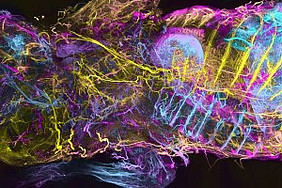A Team of Ludwig-Maximilians-Universität, the LMU Hospital and Helmholtz Munich researchers developed a new method called wildDISCO that uses standard antibodies to map the entire body of an animal using fluorescent markers. This revolutionary technique provides detailed 3D maps of structures, shedding new light on complex biological systems and diseases. With the help of AI, this will allow disease progression to be predicted in the future without the use of animal models.
WildDISCO has the potential to transform our understanding of intricate processes in health and disease and paves the way for exciting advancements in medical research. In the past, scientists relied on genetically modified animals or specialized labels to make specific structures and cells of interest visible in the entire body of an animal - with expensive and time-consuming methods.
The scientists now introduced a new method called wildDISCO, which makes use of standard antibodies to map whole bodies of mice. This ultimately enables the creation of detailed three-dimensional maps of normal and diseased structures in mammalian bodies in an easy-to-use and cost-efficient way.
A crucial factor for the success of this project was finding a way to uniformly distribute a fairly large antibody homogeneously throughout every cell of an animal. Prof. Ali Ertürk and his team identified a specific compound, which enhances cell membrane permeability and facilitates deep and even penetration of standard antibodies without aggregation. Advanced computational tools can then create body-wide maps of the localization of molecules of interest.
Using wildDISCO, the researchers were able to create detailed maps of cellular structures leading to entire mouse body atlases, focusing on the nervous system, lymphatic vessels, blood vessels, and immune cells. WildDISCO makes the whole-body atlases available online to the scientific community. In addition to that, the high-quality, large-scale imaging data generated by wildDISCO is what is needed for the training of artificial intelligence (AI) algorithms, which require large data sets. Aim is to use AI to understand diseases and develop new treatments more efficiently.
Among other things, the technique provides detailed 3D maps of structures, shedding new light on complex biological systems and diseases by, for example, predicting the progression of cancer metastasis and facilitating decisions about effectiveness in cancer micrometastasis.

